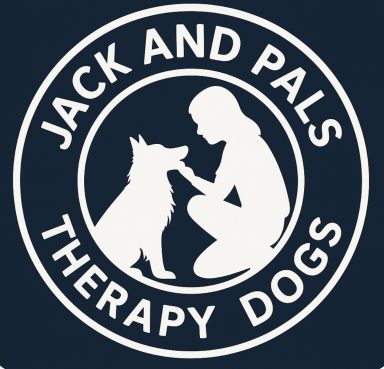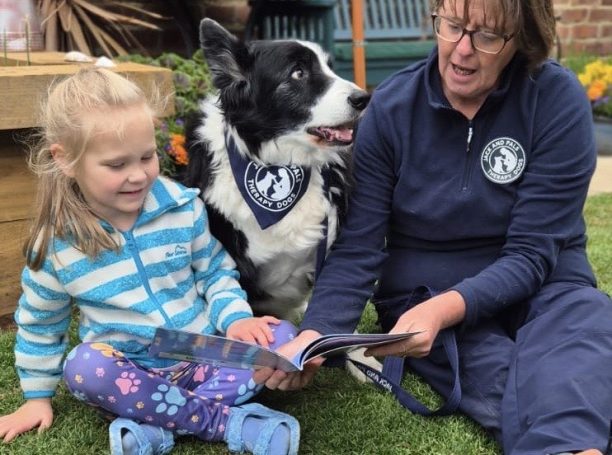
What we do
Animal therapy or pet therapy refers to the use of animals as a way to help people cope with and recover from some physical and mental health conditions.
People may choose from various animals, including dogs, horses, and birds.
Animal assisted therapy is not the only therapeutic option in most cases, but it can be a good choice for some people.
Animals may provide comfort, alert others if someone is in danger, or even perform direct actions to help a person’s condition when they are in need. It is a type of complementary or alternative therapy. It should enhance but not replace other treatments.
The goal of dog therapy is to alleviate or help people cope with some symptoms of various conditions where possible.
For many people, by interacting with a friendly dog, they can form a bond with them. This bond can produce a calming state in the person.


This bond itself may help the person in several ways,
- reducing boredom
- increasing movement and activity through walks and play
- providing companionship and decreasing loneliness
- increasing social interactions
- improving mood and general well-being
The positive interactions with our dogs can help reduce stress and a more balanced mental and emotional stat
Therapy dogs in partially uses this bond in a directed way to achieve the goals of the therapy.
How does it work?
Therapy Dogs can:
- providing comfort and reducing levels of pain
- improving movement or motor skills
- developing social or behavioural skills
- increasing motivation toward activities such as exercise or interacting with others
Our visits involves our volunteer members and their dogs who go to setting under the guidance of a member of staff. Our members will visit under the guidance of the setting's staff to help the person gain as much as they can from our visits.
Our dogs go through temperament testing to make sure that they behave properly with both the handler and other people. They also have to be vaccinated or Titre tested.
A therapy dog is not the same as an assistance or service dog and does not have all of the same rights.

Who might benefit?
Therapy dogs may help people with a range of health issues.
Mental health
- decreasing anxiety and stress
- decreasing perceptions of pain
- reducing feelings of fear or worry
- increasing feelings of social support
- providing motivation, stimulation, and focus
Research has shown that therapy dog visits may be beneficial for people from many different age groups with various conditions. the use of therapy dogs improved the efficacy of mental health treatments among adolescents.
Therapy dogs may be helpful in these conditions.
- depression
- dementia
- anxiety
- autism spectrum disorder
- attention deficit hyperactivity disorder (ADHD)
- schizophrenia
- post-traumatic stress disorder (PTSD)
- drug rehabilitation

Physical health
Therapy dogs can also help with some physical conditions, including:
- epilepsy
- heart failure
- pain from cancer treatment
- postoperative recovery
- recovery after a major stroke or another condition that causes a person to lose motor skills
Working with dogs, in these cases may motivate the person to continue their own therapy, boost their mood, and reduce signs of pain. For physical conditions, it may help them move correctly and exercise often.
Additionally, some long-term care facilities may offer therapy dog programs to help improve the mood and general well-being of people in these facilities.
Therapy dog or assistance dog?
There are distinct differences between our therapy dogs and assistance dogs. They have different legal rights under UK law, need different training and perform different roles.
Therapy Dogs
Therapy dogs are temperament assessed by the organisation they represent. They must like meeting people, including elderly and young and are friendly, you can usually tell by their wagging tails. Therapy dogs visit schools, universities, hospices, hospitals, care homes, nursing home, youth groups and businesses. They hold no special access rights and can only go places where they are specifically requested to visit.
A good start to working towards your dog becoming a therapy dog is to attend the Kennel Club's Good Citizen Dog Scheme awards. Our assessment process is based around this scheme. We don't suggest you go for specific training for your dog, we always say, your dog has either got it or not!
Assistance Dogs
Assistance dogs are trained for a specific task.
Medical assistance dogs - to detect subtle changes in an individual's body chemistry, such as changes in odour, blood sugar levels, or heart rate, which can indicate an impending medical emergency.
Guide dogs are primarily trained to help people with visual impairments navigate their environment safely.
Hearing dogs are specific type of assistance dog trained to alert their deaf or hard-of-hearing partners to important sounds. These dogs are highly trained to respond to sounds like doorbells, smoke alarms, alarm clocks, and even a baby's cry, helping individuals with hearing loss to remain safe and independent.
Unlike therapy dogs they have a specific training programme and can not be refused entry to most buildings including shops, restaurants, hospitals and they work as a team with their handler. You may see them wearing a vest saying 'do not touch, working dog' .



